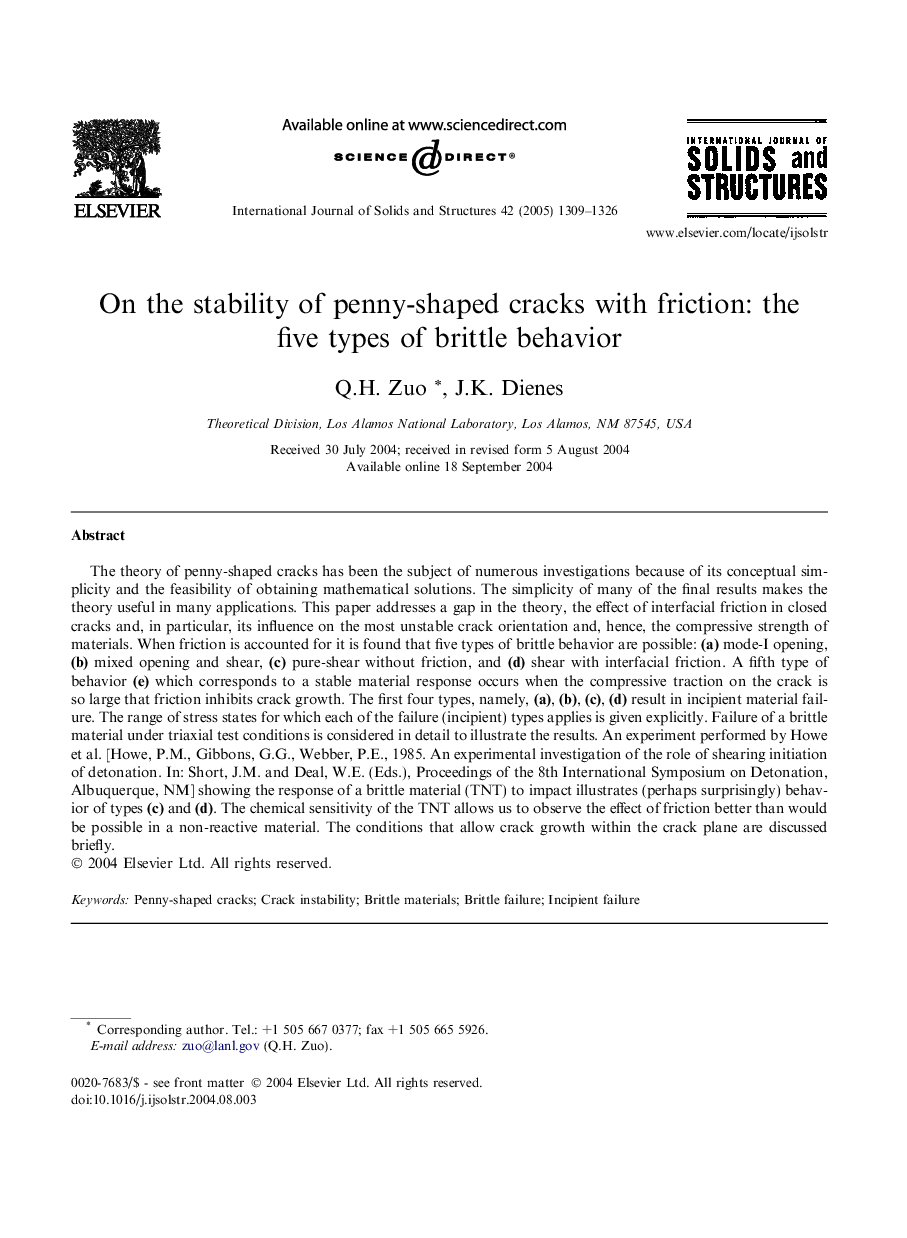| کد مقاله | کد نشریه | سال انتشار | مقاله انگلیسی | نسخه تمام متن |
|---|---|---|---|---|
| 9639701 | 1430415 | 2005 | 18 صفحه PDF | دانلود رایگان |
عنوان انگلیسی مقاله ISI
On the stability of penny-shaped cracks with friction: the five types of brittle behavior
دانلود مقاله + سفارش ترجمه
دانلود مقاله ISI انگلیسی
رایگان برای ایرانیان
کلمات کلیدی
موضوعات مرتبط
مهندسی و علوم پایه
سایر رشته های مهندسی
مهندسی عمران و سازه
پیش نمایش صفحه اول مقاله

چکیده انگلیسی
The theory of penny-shaped cracks has been the subject of numerous investigations because of its conceptual simplicity and the feasibility of obtaining mathematical solutions. The simplicity of many of the final results makes the theory useful in many applications. This paper addresses a gap in the theory, the effect of interfacial friction in closed cracks and, in particular, its influence on the most unstable crack orientation and, hence, the compressive strength of materials. When friction is accounted for it is found that five types of brittle behavior are possible: (a) mode-I opening, (b) mixed opening and shear, (c) pure-shear without friction, and (d) shear with interfacial friction. A fifth type of behavior (e) which corresponds to a stable material response occurs when the compressive traction on the crack is so large that friction inhibits crack growth. The first four types, namely, (a), (b), (c), (d) result in incipient material failure. The range of stress states for which each of the failure (incipient) types applies is given explicitly. Failure of a brittle material under triaxial test conditions is considered in detail to illustrate the results. An experiment performed by Howe et al. [Howe, P.M., Gibbons, G.G., Webber, P.E., 1985. An experimental investigation of the role of shearing initiation of detonation. In: Short, J.M. and Deal, W.E. (Eds.), Proceedings of the 8th International Symposium on Detonation, Albuquerque, NM] showing the response of a brittle material (TNT) to impact illustrates (perhaps surprisingly) behavior of types (c) and (d). The chemical sensitivity of the TNT allows us to observe the effect of friction better than would be possible in a non-reactive material. The conditions that allow crack growth within the crack plane are discussed briefly.
ناشر
Database: Elsevier - ScienceDirect (ساینس دایرکت)
Journal: International Journal of Solids and Structures - Volume 42, Issues 5â6, March 2005, Pages 1309-1326
Journal: International Journal of Solids and Structures - Volume 42, Issues 5â6, March 2005, Pages 1309-1326
نویسندگان
Q.H. Zuo, J.K. Dienes,